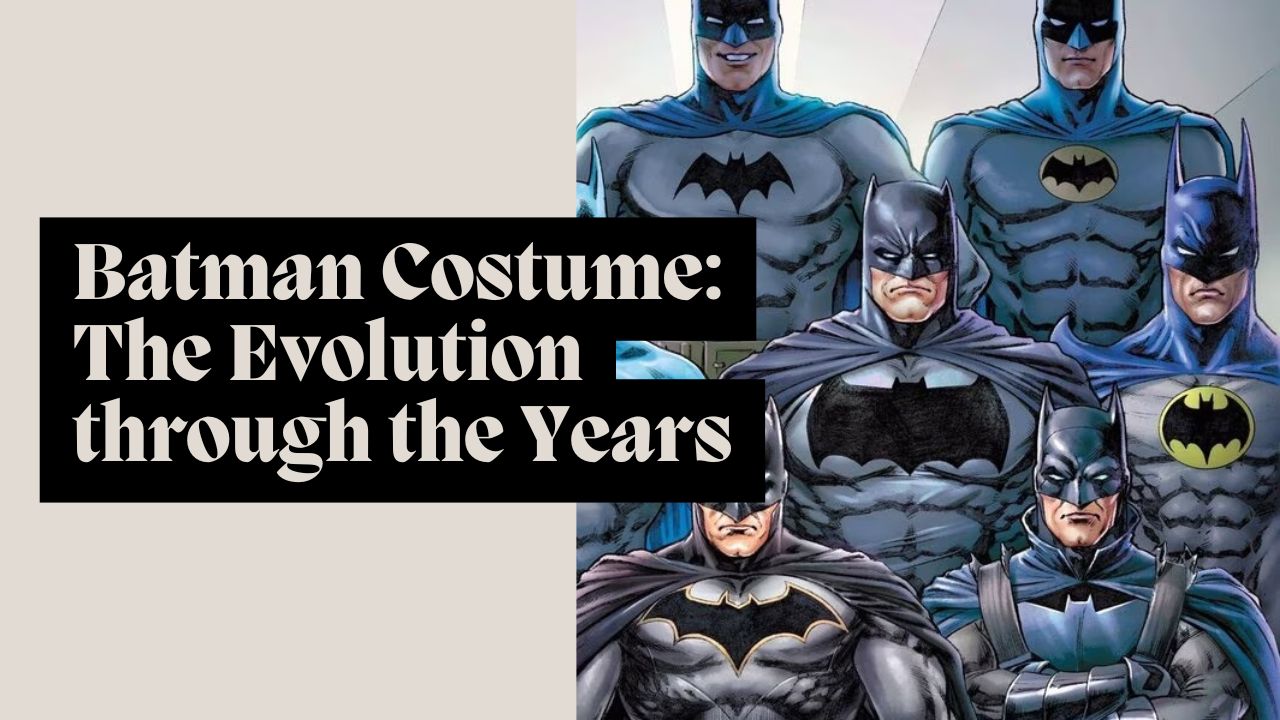Batman, one of the most iconic superheroes, is recognized not only for his compelling character and rich storylines but also for his iconic Batman Costume.
The Batman costume has evolved significantly over the decades, reflecting the changing styles, technological advancements, and creative directions of the character.
From simple fabric suits to modern high-tech armor, each iteration of the Batman costume represents a unique era of the Dark Knight.
This article explores the fascinating evolution of the Batman costume across movies and series, highlighting how each version reflects the hero’s persona and the times in which they were created.
The Early Days: A Simple Fabric Batman Costume
The journey of Batman’s costume began with a simple fabric design, first appearing on screen in the 1949 serial Batman and Robin.
This iteration of the costume mirrored the character’s appearance in the comic books of the era, with light gray fabric, blue accents, and a yellow-ellipsed bat symbol on the chest.
When the Batman series transitioned to full-color television in the 1960s, the costume gained a brighter and more vibrant look.
The cheerful and campy tone of the Adam West-led Batman series popularized this version, making it synonymous with the character for years.
The lightweight material and straightforward design reflected the simplicity of superhero storytelling during this time, making it one of the most memorable versions of Batman’s costume.
The Dark Knight’s Transformation: Grit and Style
The late 1980s and 1990s brought a darker tone to Batman’s storylines, and the costumes followed suit.
Tim Burton’s Batman (1989) and Batman Returns (1992) introduced a more gothic aesthetic, with a fully black rubber suit that emphasized shadows and menace.
This version of the costume also featured the now-iconic chest-mounted bat emblem in bright yellow, contrasting sharply with the darker tones.
In The Dark Knight trilogy by Christopher Nolan, the costume took a realistic, tactical approach. Introduced in Batman Begins (2005), this new Batsuit featured a body armor look, designed to protect Bruce Wayne in his dangerous encounters.
The suit also had functional elements such as a memory cloth cape, a grappling hook, and a utility belt. This iteration of the costume became one of the most celebrated designs, combining aesthetics with practicality.
Controversial Choices: The External Nipples Era
The 1990s saw one of the most talked-about changes to Batman’s costume: the inclusion of external nipples. This design, introduced in Batman Forever (1995) and continued in Batman & Robin (1997), was highly stylized and aimed to evoke a sense of classical antiquity.
However, the exaggerated anatomical details, including glistening chest plates and prominent close-ups, were heavily criticized by contemporary audiences.
The campy and flamboyant style of these costumes divided fans and critics alike, but they remain a unique chapter in the evolution of Batman’s wardrobe.
The moodily lit sets and glossy, action-figure-like appearance of these suits may not have aged well, but they certainly left a lasting impression.
The Muscular Batman: A Bulked-Up Look
In 2005, Batman underwent another transformation with the rebooted series helmed by Christopher Nolan.
Christian Bale’s portrayal of the character in Batman Begins introduced a muscular and bulked-up look that reflected the original comic book design of Bruce Wayne as a physically imposing figure.
The suit in The Dark Knight (2008) and The Dark Knight Rises (2012) was not only muscular but also highly functional.
It featured Kevlar plating, a reinforced cowl, and advanced technology that allowed the actor to perform agile movements while maintaining the suit’s intimidating appearance.
This iteration was praised for its blend of realism and superhero flair, cementing its place as one of the best designs in the franchise.
A Return to Simplicity: The Batman (2022)
In Matt Reeves’ The Batman (2022), starring Robert Pattinson, the costume took a minimalist yet modern approach.
Unlike previous versions, this suit had a less bulky silhouette and emphasized angular motifs. The cowl and mask appeared hand-stitched, lending a gritty and grounded feel to the character.
This iteration of the costume reflected the younger, less experienced Batman portrayed in the film. The design prioritized practicality over grandeur, with a homemade aesthetic that resonated with the movie’s darker and more realistic tone.
Fans appreciated the simplicity of the costume, which stood out as a departure from the high-tech armor seen in recent adaptations.
Key Features Across the Decades
Throughout its evolution, several key elements have remained consistent in Batman’s costume, including the cape, cowl, and bat emblem.
However, the materials, color schemes, and functionality have adapted to suit the storytelling needs of each era.
From the light gray fabrics of the 1960s to the armored suits of the 2000s, each version of the costume has contributed to the enduring legacy of the Dark Knight.
Conclusion
The Batman costume is more than just a superhero outfit—it’s a symbol of the character’s evolution and the creative vision of each era.
From the simple fabric suits of the early days to the high-tech, hand-stitched designs of modern films, Batman’s costumes have captivated audiences and become a crucial part of his identity.
Whether it’s the campy charm of the 1960s, the gothic aesthetic of the 1980s, or the gritty realism of today, each iteration of the Batman costume tells a story of its own.
As the franchise continues to grow, fans can look forward to seeing how the Caped Crusader’s iconic look will evolve in the years to come.

